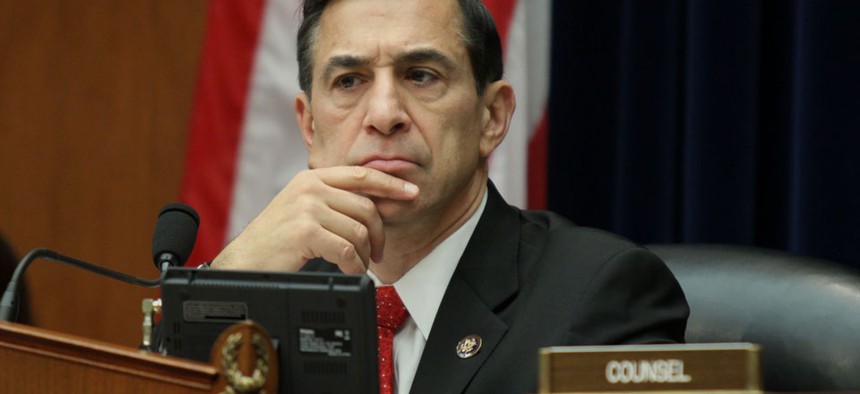
The Smart Savings Act is sponsored by House Oversight and Government Reform Chairman Darrell Issa, R-Calif. Lauren Victoria Burke/AP
Bill Would Change TSP Default Settings
House panel marks up legislation Wednesday that would auto-enroll new federal hires into one of five lifecycle funds instead of the government securities fund.
A House committee on Wednesday will consider a bill that would automatically enroll new federal employees in a more diverse, age-appropriate retirement fund rather than the safer government securities offering.
The Smart Savings Act, sponsored by House Oversight and Government Reform Chairman Darrell Issa, R-Calif., would change the default enrollment fund in the Thrift Savings Plan for new hires from the G Fund to the lifecycle (L) funds designed to move investors to less risky portfolios as they near retirement.
The TSP launched a program in August 2010 that automatically signs up all new civilian hires to allocate 3 percent of their basic pay to the G fund, unless they choose to end their contributions or change the amount. Participants also receive a 3 percent match and a 1 percent contribution from their agencies, unless they opt out of automatic enrollment. The G fund is the most stable investment of the TSP’s options, while the L funds are a mix of the TSP’s G, F, C, S and I offerings, and are crafted to help yield higher returns through diversity. The L funds are composed of the L Income, L 2020, L 2030, L 2040 and L 2050.
Issa’s bill would only apply to new federal employees hired who are auto-enrolled in the TSP. It will not affect TSP participants who are currently auto enrolled. Wednesday’s committee markup is from 10 a.m. to 1 p.m.
The Federal Retirement Thrift Investment Board, which administers the TSP, last year requested the legislation to switch the default fund from the G Fund to the lifecycle funds. The Employee Thrift Advisory Council, which advises the TSP board on investment policies and the plan’s administration and is made up of representatives from employee organizations, unions and the uniformed services, endorsed the legislative proposal in November after initially opposing it.
FRTIB has found that while automatic enrollment has increased TSP participation, new government hires under the age of 29 have too much money invested in the G Fund – likely a result of auto-enrollment’s G Fund default option. The government securities offering, while traditionally very stable, also does not yield very high returns. In February, the G Fund continued its steady growth, increasing 0.18 percent and as of the end of that month was up 2.03 percent in the last 12 months. Meanwhile, in February, the L Income Fund – for those who already have started withdrawing money – gained 1.15 percent; L 2020 increased 2.73; L 2030 gained 3.44 percent; L 2040 was up 3.94 percent; and L 2050 saw a 4.44 percent boost.
In a move that could perhaps put some detractors of the switch at ease, FRTIB announced last year the lifecycle funds would allocate a larger proportion of their total configuration to the G Fund. The board contracted a consulting firm to review its L Funds allocations and opted to make the change in light of the findings.







